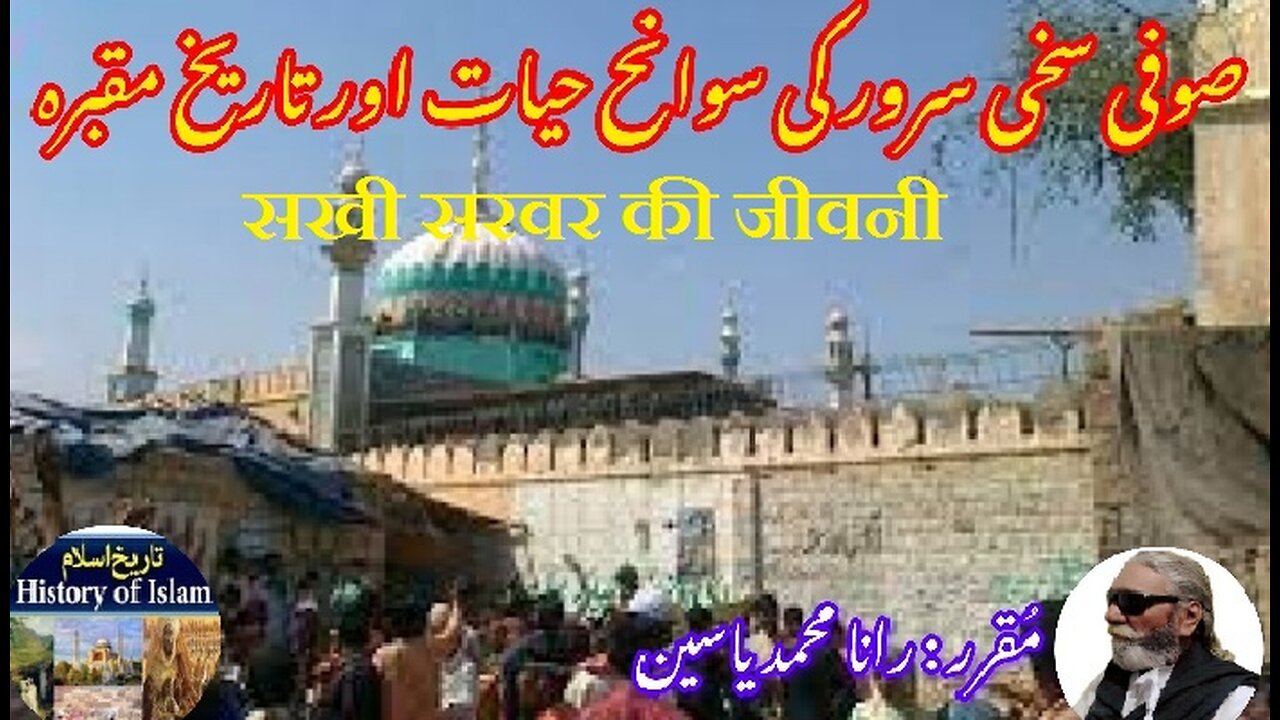Premium Only Content

Biography of Sakhi Sarwar | सखी सरवर की जीवनी | سخی سرور کی سوانح عمری اور مزار کی تاریخ
@islamichistory813 #biography #of #sakhi #sarwar #sufisaint #cultural #heritage #biography #islamic #mysticism #islamic #philosophy #shrine #historical #figures
Biography of Sakhi Sarwar and the history of his shrine
Dekhti Aankhooon aur sountay kaanoon ko Asslamoalaikum, sisters, brothers friends and elders, in informative series videos of Islamic ascolars, sufisaints, cultural heritages, islamic philosophys, islamic mysticisms and historical figures. today we are describing biography of Sakhi Sarwar and the history of his shrine.
Sakhi Sarwar, also known by his real name Syed Ahmad Sultan, is a highly revered Sufi figure whose influence spread widely across the Punjab region during the 12th century. Though the historical details of his life remain cloaked in legend and folklore, he continues to be celebrated as a symbol of generosity, spirituality, and interfaith harmony. Born around 1128 CE in Shahkot, in what is now the Jhang District of Pakistan’s Punjab province, Sakhi Sarwar was the son of Syed Zain-ul-Abidin and his mother is said to have belonged to the Khokhar community. His title "Sakhi," meaning "generous," reflects the reputation he earned for his selflessness and kindness, especially towards the poor and the marginalized.
Due to familial conflicts, Sakhi Sarwar reportedly left his hometown and embarked on a spiritual journey that took him as far as Baghdad, a major center of Islamic scholarship and Sufi learning. After traveling extensively, he eventually settled in the village of Nigaha, located in what is today the Dera Ghazi Khan District in southern Punjab, Pakistan. It was there that he spent the final years of his life, preaching, healing, and guiding people towards a spiritual path. According to oral tradition, he was martyred in 1174 CE, either by his own jealous relatives or in a feud involving local Jat and Pathan tribes, allegedly after he married the daughter of an Afghan chief. Despite the lack of clear historical records, his legacy has lived on for centuries through popular devotion and cultural practices.
The shrine of Sakhi Sarwar is located in Nigaha, close to the city of Dera Ghazi Khan, and is among the most prominent and widely visited Sufi shrines in South Asia. Known locally as *Darbar Hazrat Syed Ahmad Sultan Sakhi Sarwar*, the shrine complex became a major pilgrimage site during the Mughal and later colonial periods, drawing not just Muslims but also Hindus and Sikhs. This intercommunal veneration reflects the inclusive spiritual message that Sakhi Sarwar is believed to have embodied.
While the exact details of who initially built the shrine are lost to history, it is believed that the early structure was raised by local devotees soon after his death to honor his memory. Over time, especially during the reign of Mughal emperors and later under local rulers in the colonial era, the shrine was expanded and renovated. Wealthy patrons, spiritual successors, and community leaders contributed to its upkeep and embellishment. The shrine includes a mosque, the main tomb chamber, and surrounding courtyards where large congregations gather, especially during the annual *urs* (death anniversary commemoration).
Today, the shrine stands as a beacon of Sufi tradition and communal unity. Pilgrims from across Pakistan and northern India visit the shrine to pay their respects, make offerings, and seek blessings. Sakhi Sarwar's dargah is not just a spiritual site but a living center of folk culture, music, and devotion, where his memory continues to inspire love, tolerance, and humility across generations.
With this, we seek your permission until tomorrow, tomorrow we will describe the biography of Sar? Saltuk Baba and the history of his Shrine.
Allah Hafiz
==============================
-
 9:31
9:31
ISLAMIC HISTORY
21 hours agoIslamic History Episode 238 Mutawakkil's circumstances and sincerity متوکل کے حالات و اخلاص
3 -
 9:11
9:11
MattMorseTV
15 hours ago $14.07 earnedVance just DROPPED the HAMMER.
126K49 -
 10:16
10:16
GritsGG
16 hours agoBEST Controller Settings for Warzone! Rank 1 Player's Settings!
10.9K2 -
 2:13:30
2:13:30
Side Scrollers Podcast
20 hours agoUK Introduces MANDATORY Digital ID + Dallas ICE Shooting BLAMED on Gaming + More | Side Scrollers
139K18 -
 10:34
10:34
The Pascal Show
15 hours ago $4.95 earnedFOOTAGE REVEALED! Images Of Celeste Rivas Exposed Before Her Disappearance From Home Running To D4vd
14.4K2 -
 LIVE
LIVE
Lofi Girl
2 years agoSynthwave Radio 🌌 - beats to chill/game to
310 watching -
 4:23:47
4:23:47
MissesMaam
10 hours ago*Spicy* Friend Friday with Mally_Mouse and Friends!! 💚✨
300K17 -
 2:05:09
2:05:09
TimcastIRL
11 hours agoRIOTS Leftist ATTACK ICE, Tear Gas Deployed, Feds Ordered To IGNORE CA Law, CIVIL WAR! | Timcast IRL
338K278 -
 15:57
15:57
Robbi On The Record
1 day ago $9.19 earnedTranshumanism: Are Humans Becoming Obsolete? Neuralink & CRISPR explained
56K23 -
 2:22:21
2:22:21
TheSaltyCracker
11 hours agoICE Smashing Antifa ReeEEStream 9-26-25
134K197